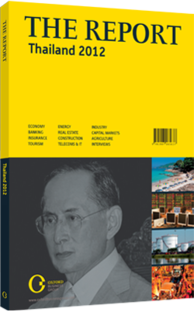OBG talks to Sutti Rajitrangson, President, Thai Life Assurance Association

Interview: Sutti Rajitrangson
How have the floods affected the life segment?
SUTTI RAJITRANGSON: In terms of life claims linked to the floods, the loss of life has not been that large – about 120 cases. Incidental and medical claims have also been on a small scale. Indirectly, the floods affected the segment in that new businesses in the areas affected did drop off – we could not go into those areas for at least two months. Another indirect impact has been on renewal premiums – during those 2-3 months we extended the grace period for affected customers by at least three months. This had an impact on total premiums for the industry as a whole. For 2011 we had initially projected a total premium increase of around 15% for the year, but production fell and total premiums also slowed down from October onwards. We expect total growth for 2011 to hit about 12%. There has not been any impact on life insurers’ relations with reinsurers. At the start of 2012, we have seen normal treaty renewals take place, which is an indicator of normal relations.
What changes are distribution channels seeing?
SUTTI: I still think bancassurance will continue to grow strongly. Banks work diligently with insurance partners – by selling insurance the banks get a high rate of return, so they push very hard. This is likely to continue, given the large size of banks’ customer bases.
Banks have not exploited the full portfolio of customers so far. Bancassurance will generate a higher growth rate than agencies, but this is because agents’ customer bases are already very large, so a rise of just 1-2% means a lot. It is a more mature distribution segment, but one that will continue to play a major part in life. Other direct marketing, like telemarketing and direct TV, has been increasing as well. Telemarketing had a very strong record in 2011. Many companies have had a good outcome from these channels. Non-agency channels have been growing their share of the industry’s total portfolio in recent years. Agency-based sales have dropped from 80% of the total to 70%, and are now standing at around 60%. Different channels target different groups of customers. People who deal with the banks – those who have regular incomes, or the business sector – do not really have enough time to deal with the details of insurance, so some of them buy from banks, as the banks propose. But we have to limit the products sold through bancassurance to those easily be rolled out through banks. With these, we can get customer feedback easily, and normally we do not go for products that require medical check-ups.
This limits the portfolio of products sold through banking channels. The agency model presents more proximity, and is able to provide more education to customers who are just entering the insurance market. Agents can add on policies and bring a wealth of knowledge of insurance products to the transaction. So it is no longer seen so much as a competition between bank and agency channels – underwriters see they can derive benefit from both. Agents need to do more work on education and training so they are well-versed in a wider range of products – including life insurance coverage and also on investment products – so they can go beyond what the bank can offer.
How viable are low-income insurance products?
SUTTI: In fact coverage for those on low incomes is not a new thing. Insurers have been offering this for some time, in the form of industrial policies, for instance, which are sold monthly, and to which premiums are collected. Bigger companies are looking into this segment, developing new products, such as in 20 pay life, that suit people’s needs with low cost and reasonable coverage, and then roll these out through the villages. In fact, microinsurance has started, but has remained perhaps too specific in terms of product type. The regulator has launched a new licence for micro-agents only, but agents selling microinsurance get such low returns it is not attractive. People training for the agency licence might as well get the full licence rather than the microinsurance licence. Insurers tend to view microinsurance as an add-on instead of something targeted explicitly.
You have reached the limit of premium articles you can view for free.
Choose from the options below to purchase print or digital editions of our Reports. You can also purchase a website subscription giving you unlimited access to all of our Reports online for 12 months.
If you have already purchased this Report or have a website subscription, please login to continue.

